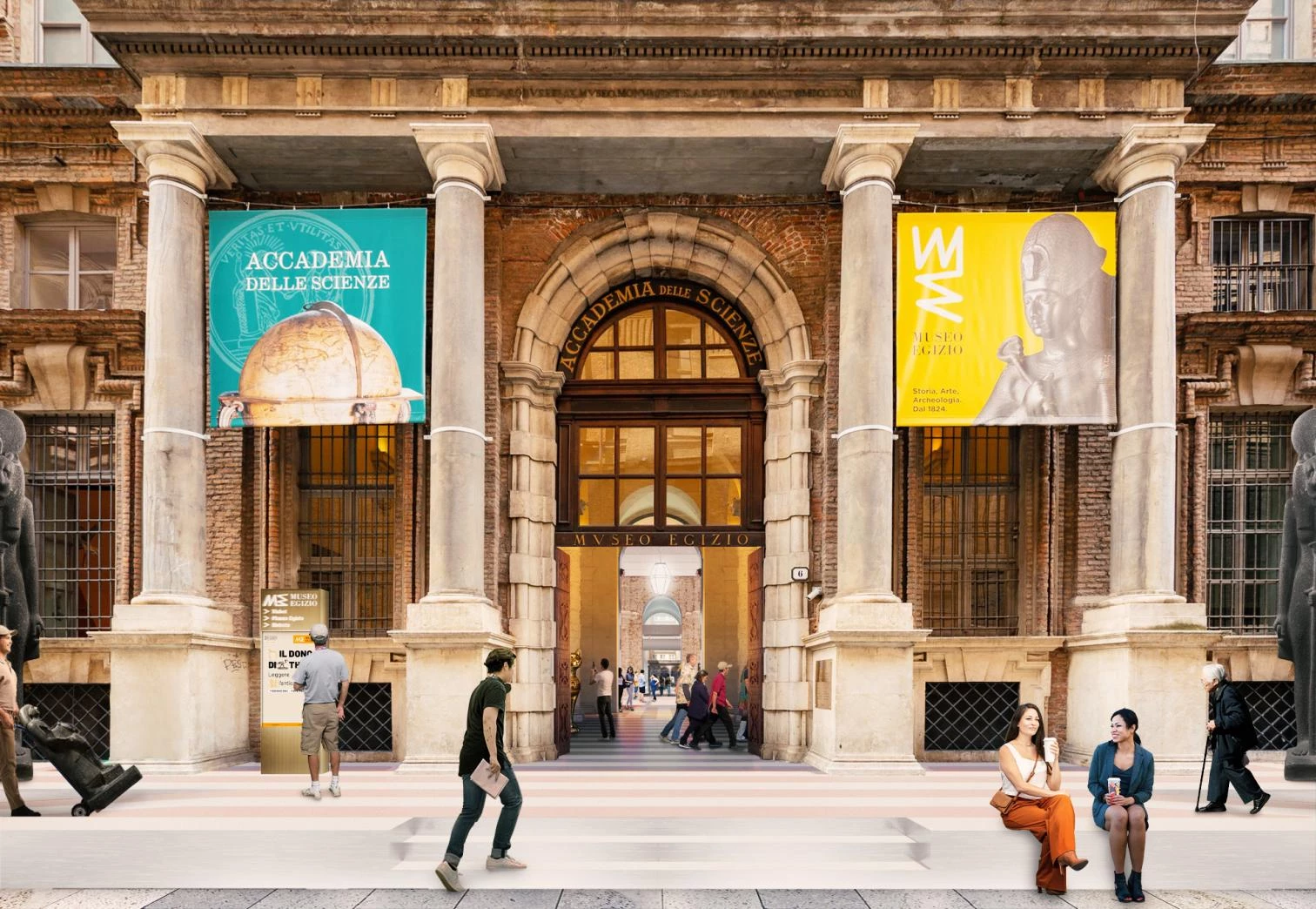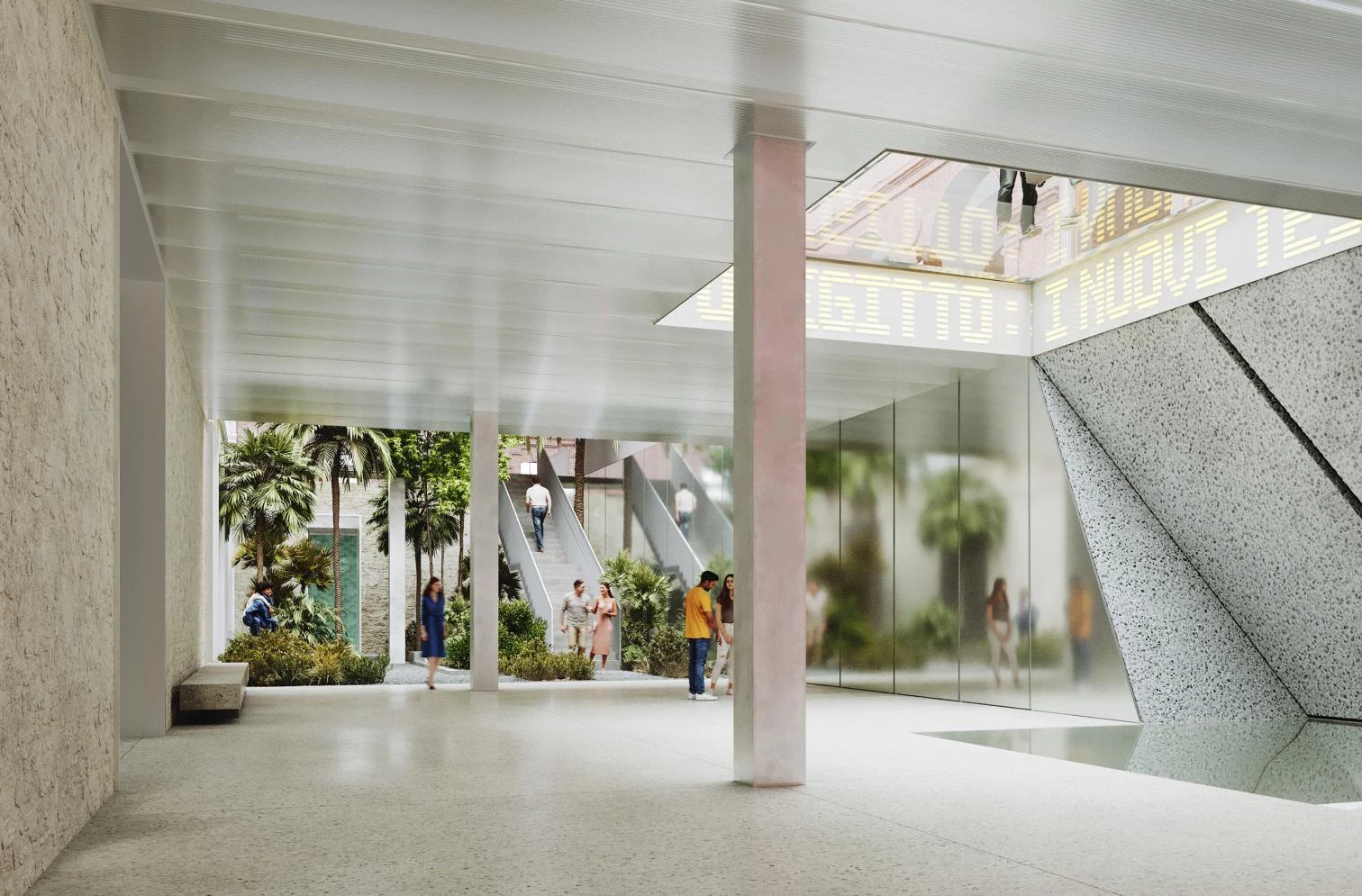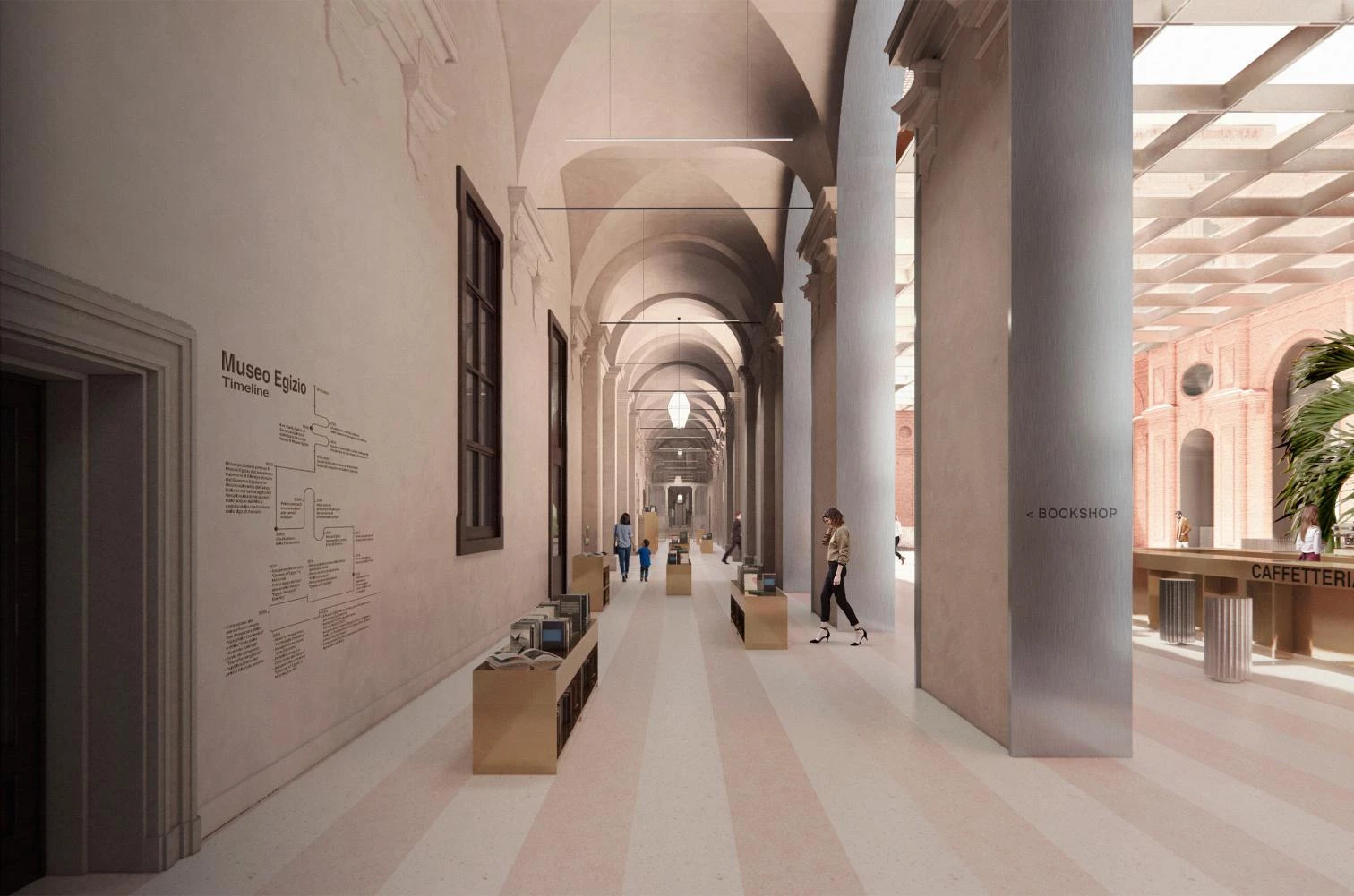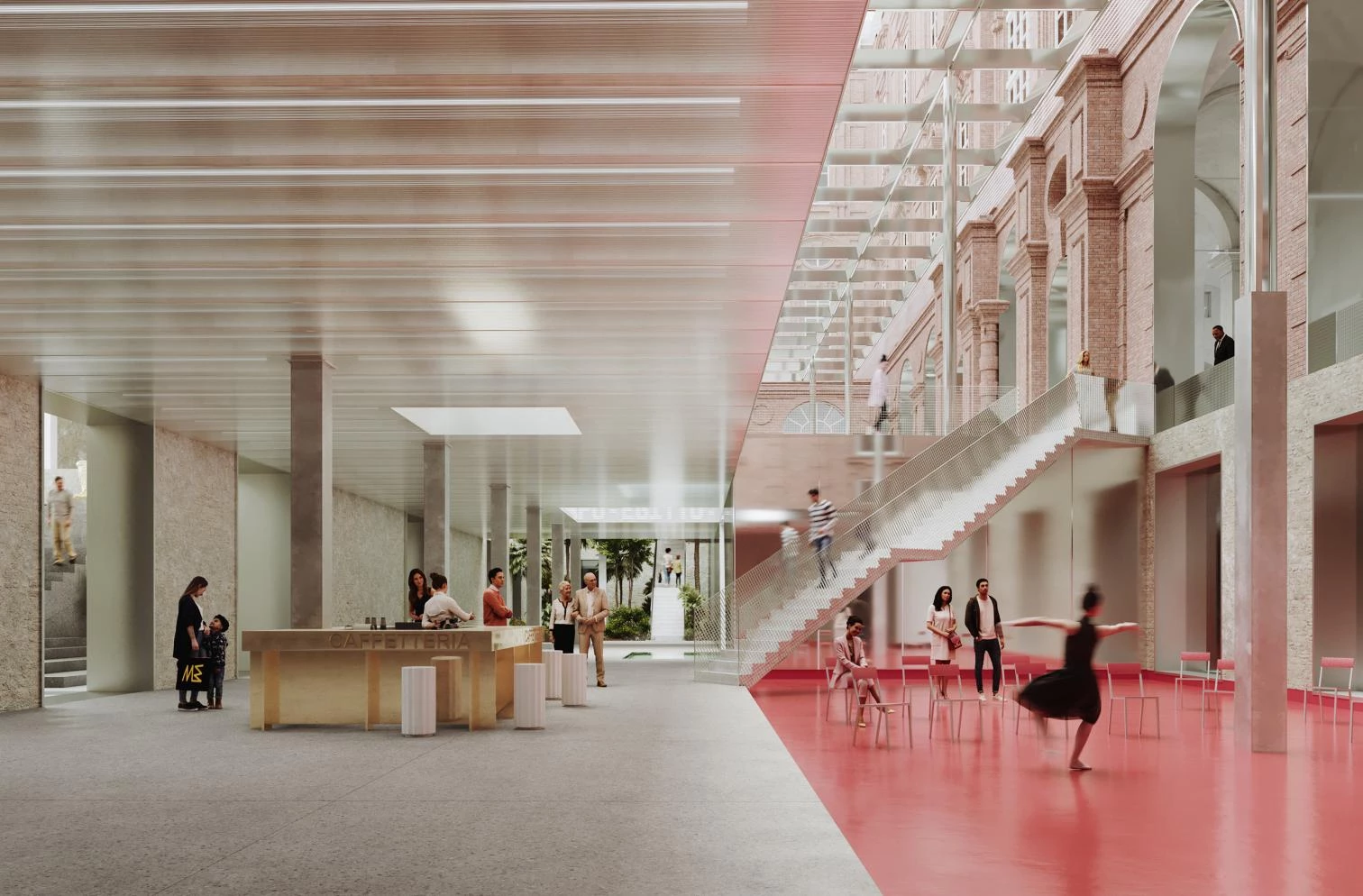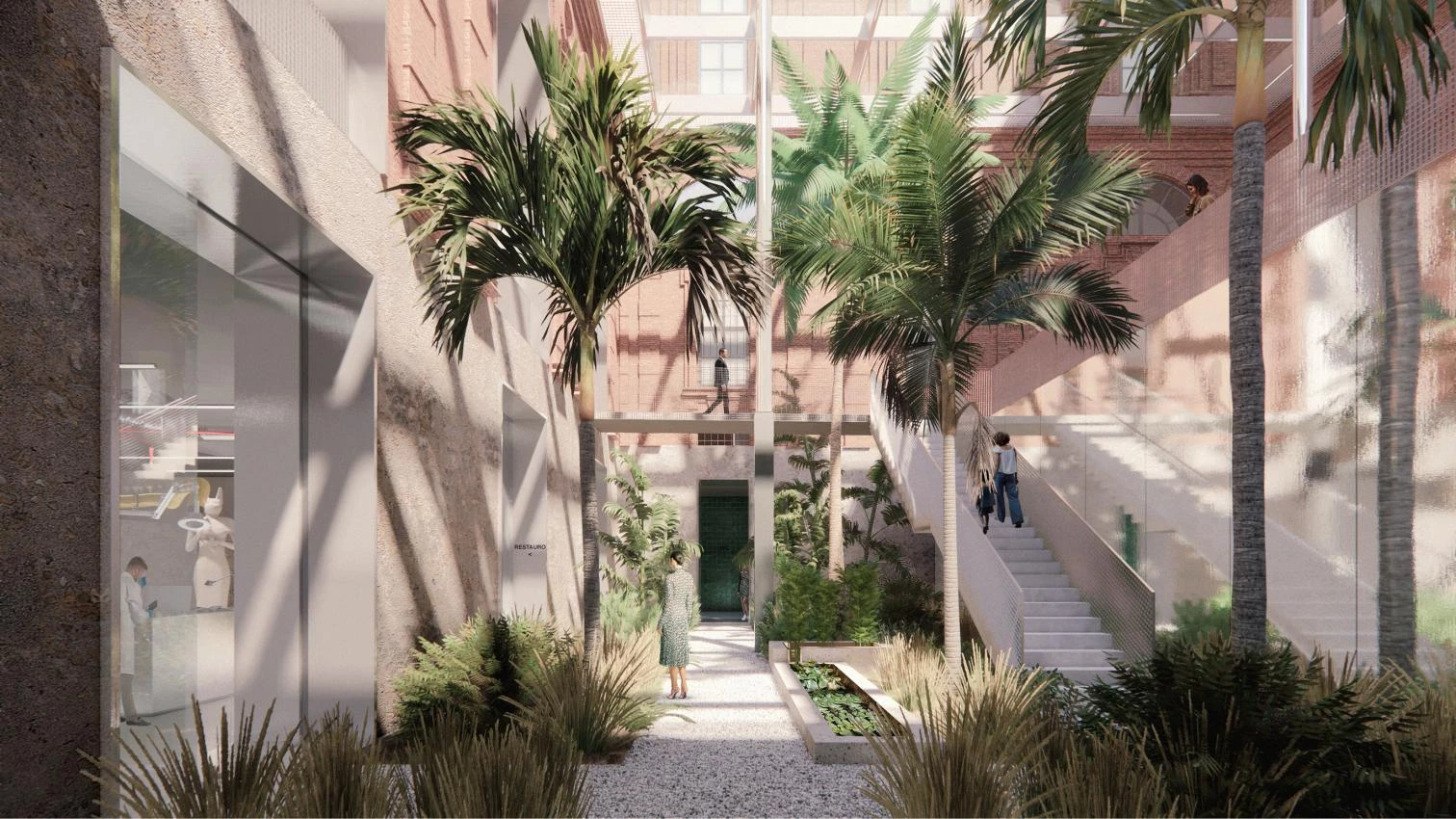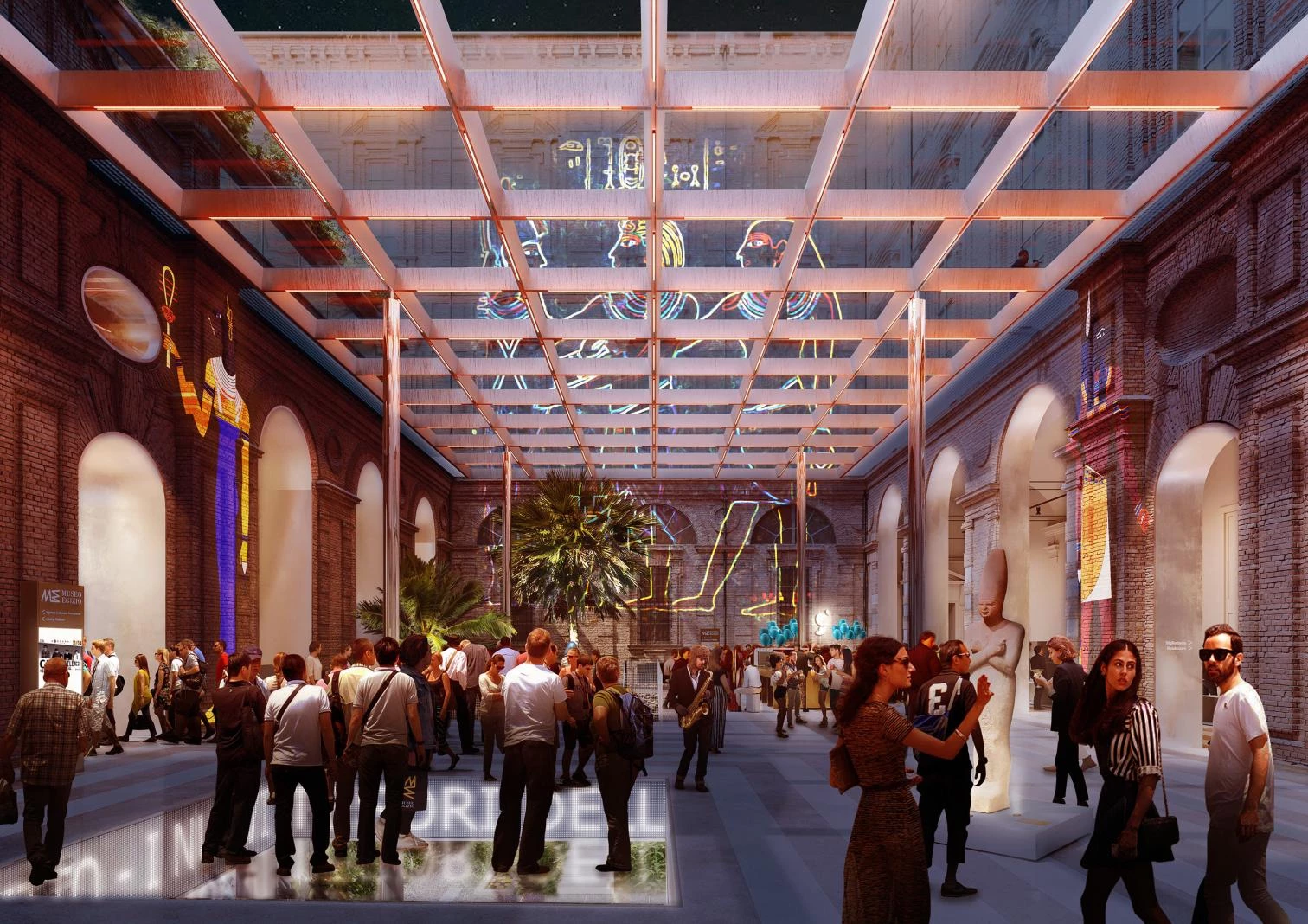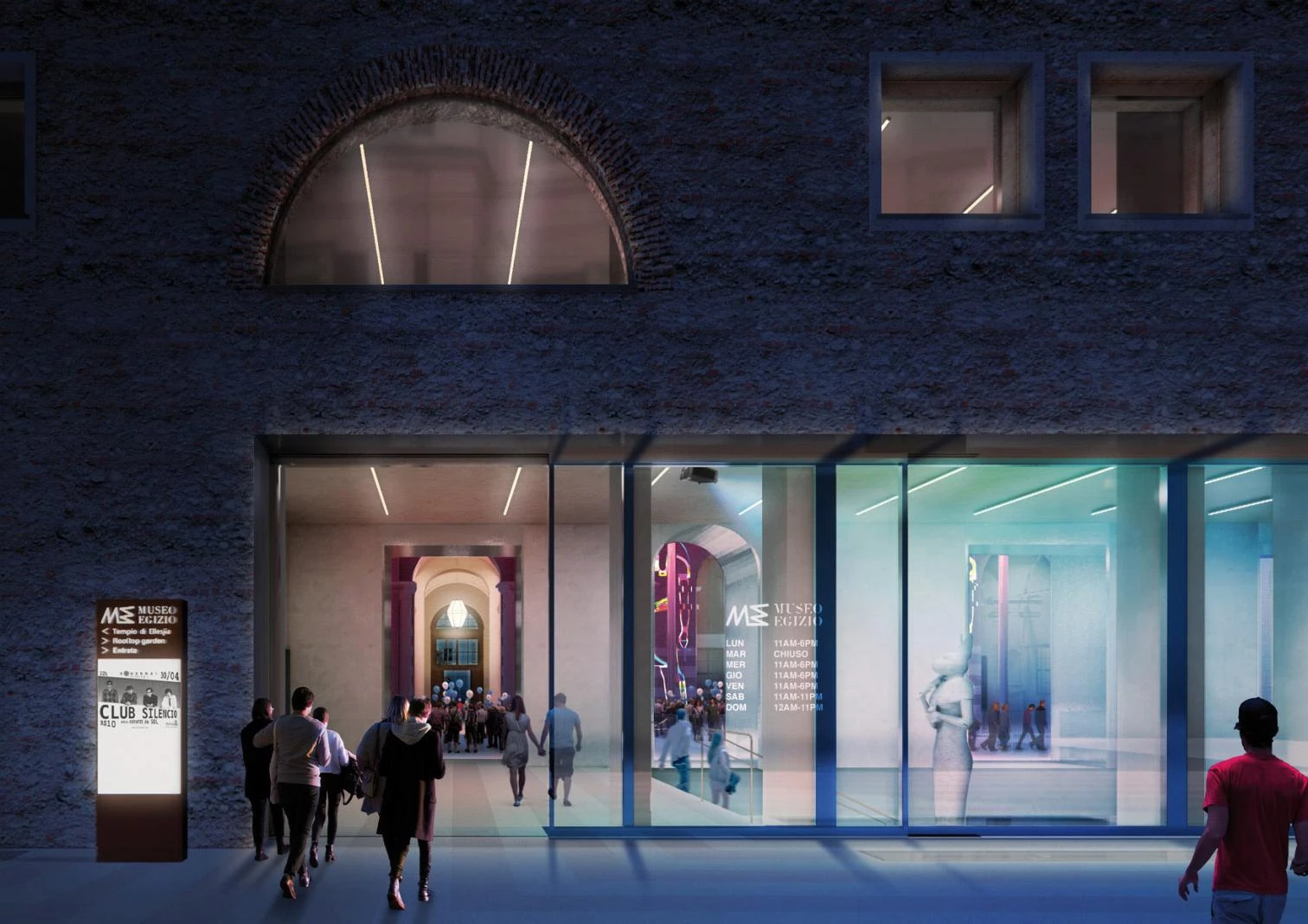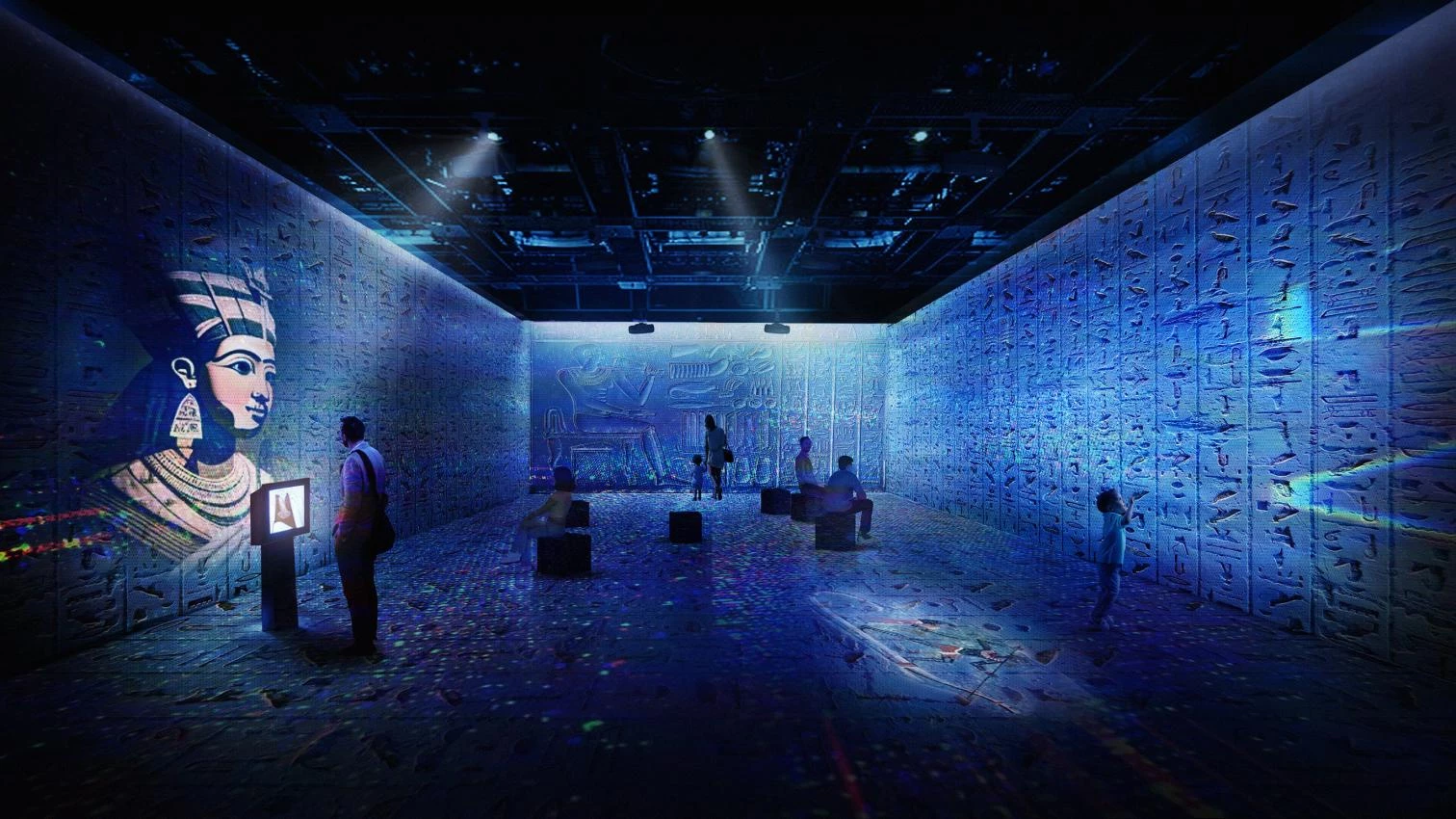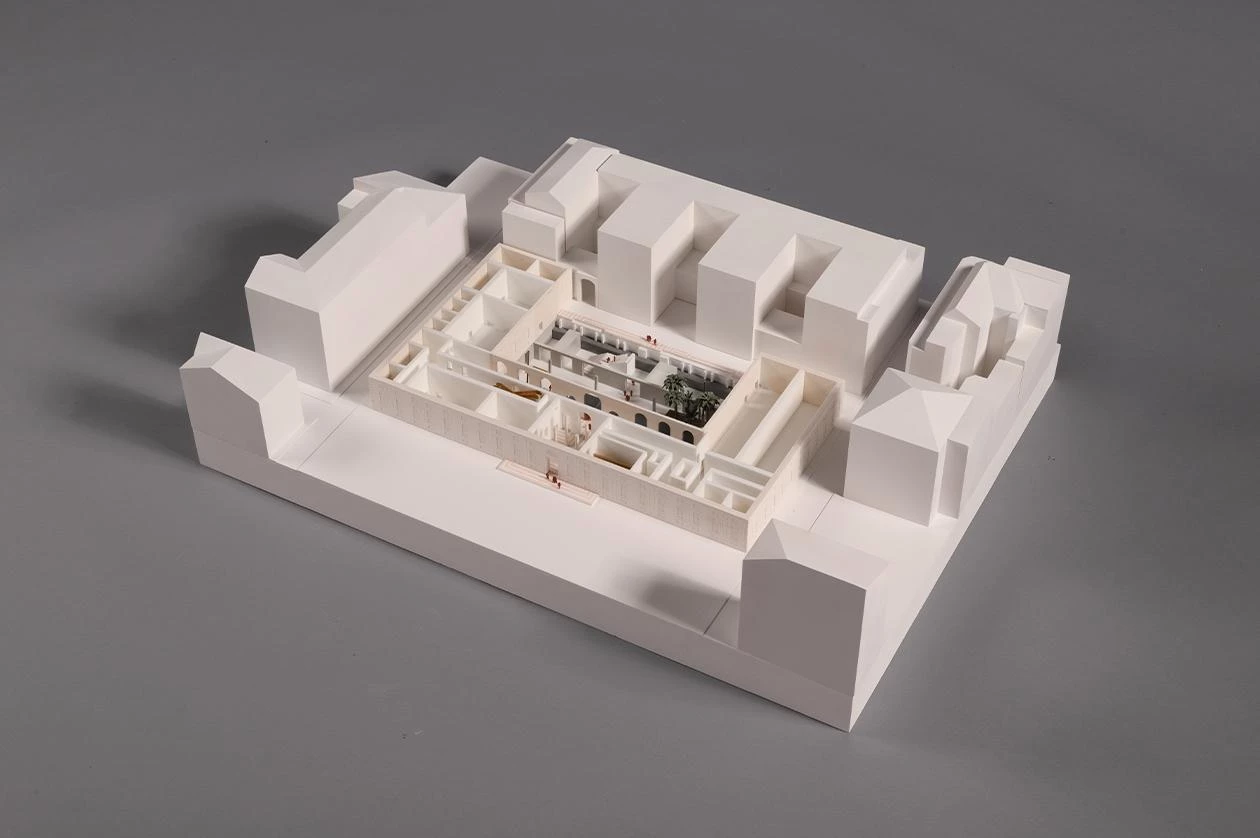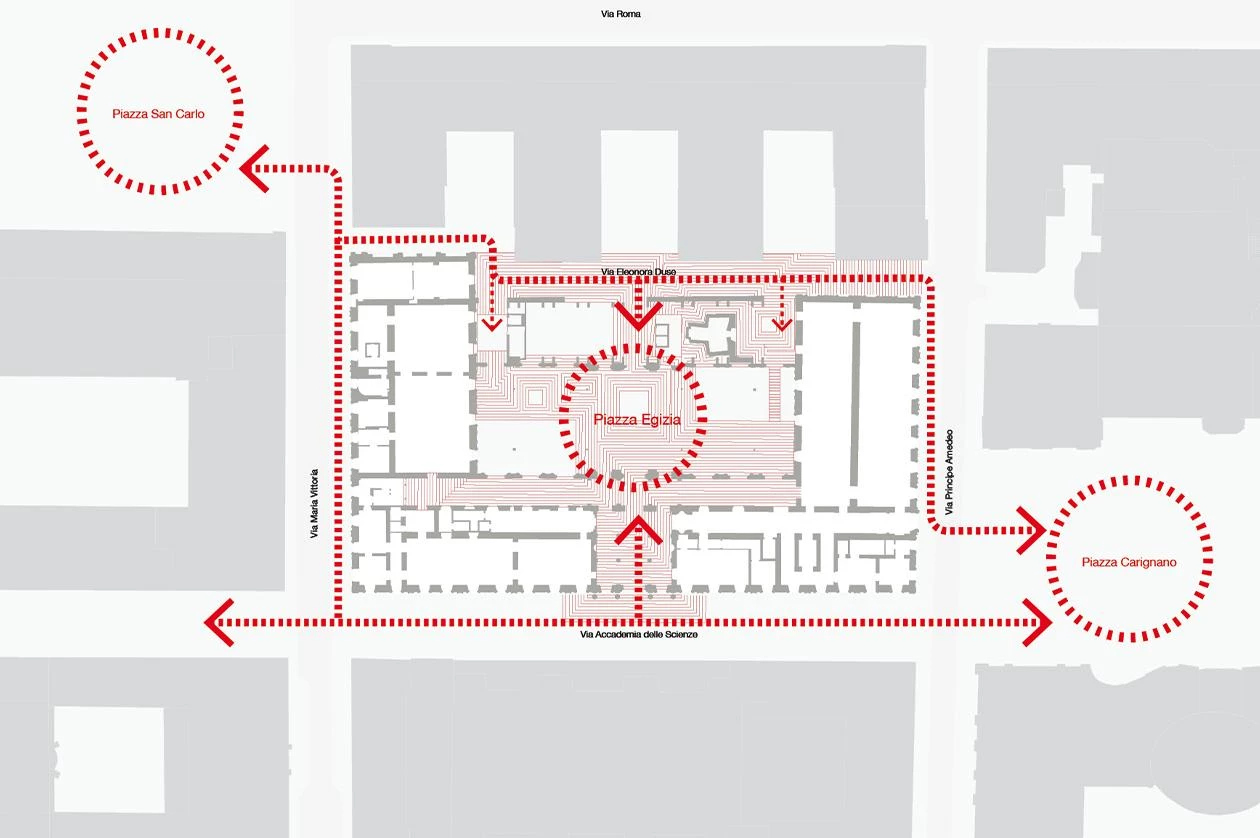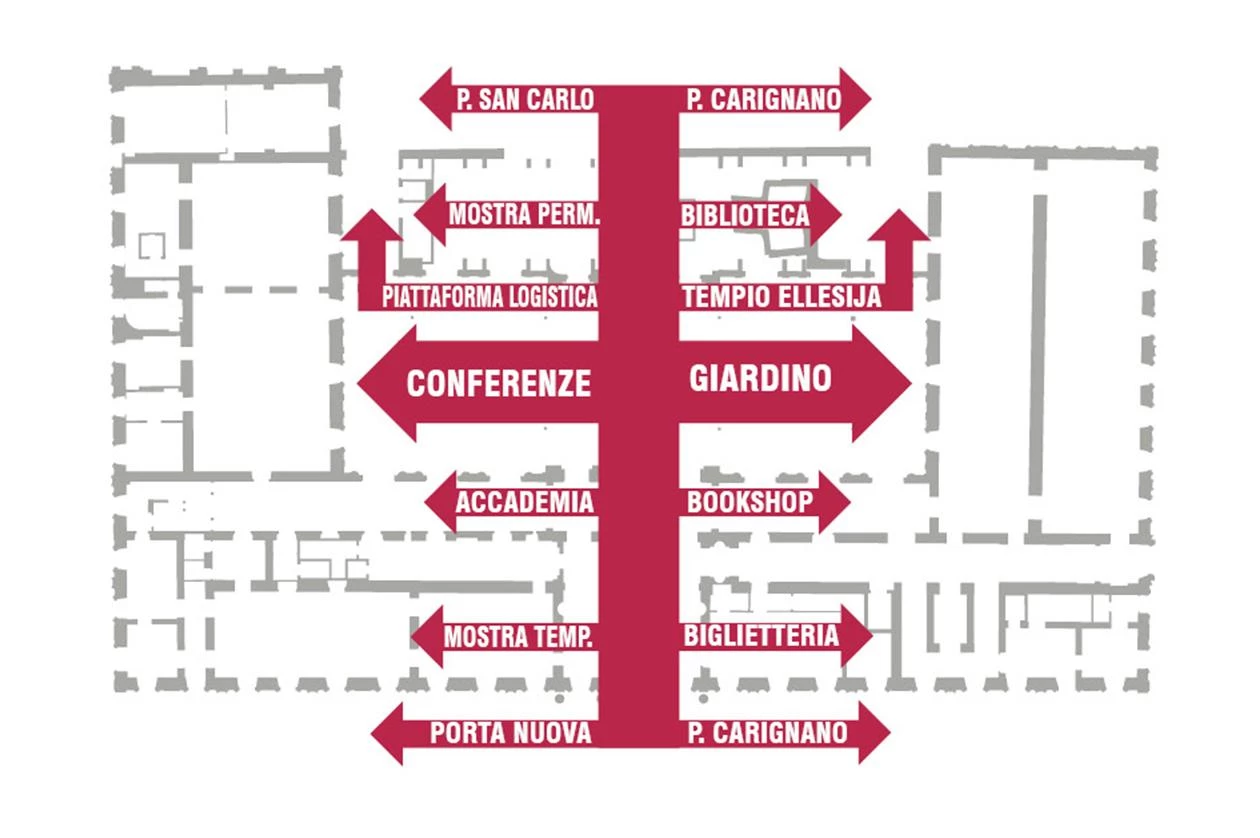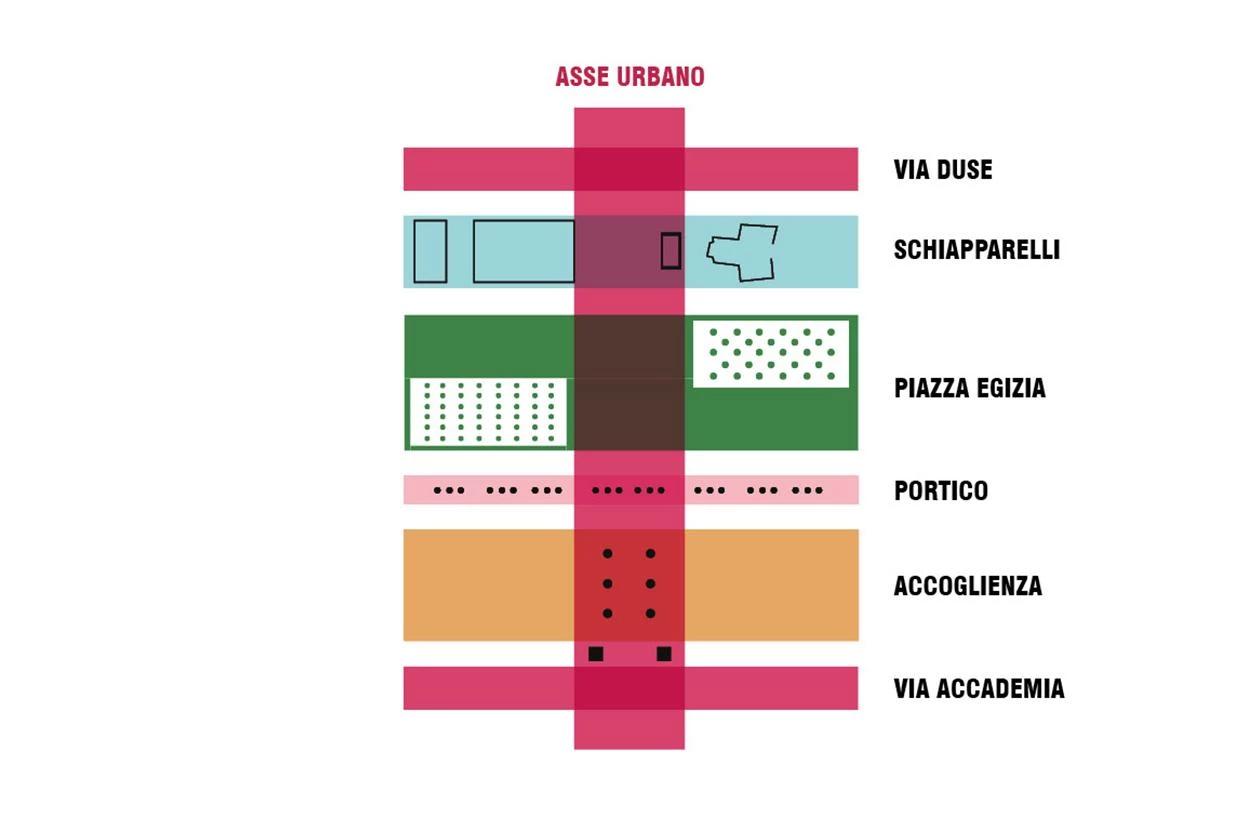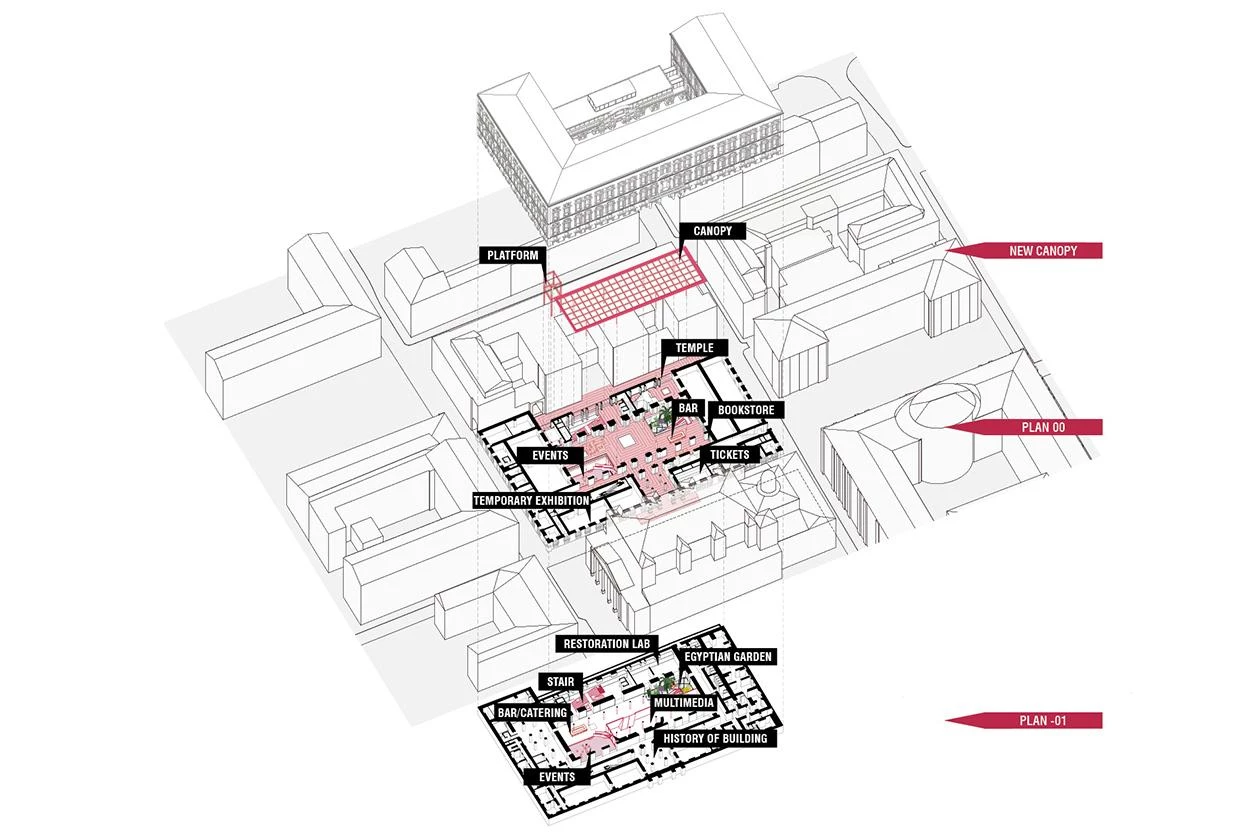Museo Egizio 2024 in Turín
OMA - Office for Metropolitan Architecture- Type Museum Culture / Leisure Refurbishment
- City Turin
- Country Italy
Museum Egizio founded in 1824 is the world’s oldest museum for Ancient Egyptian culture, housed in Collegio dei Nobili in Turin. A complex consisting of exhibition galleries, the Academy of Sciences, and an open courtyard, the museum’s architecture has undergone numerous alterations in the past two centuries, increasingly becoming enclosed and detached from the rest of the city. Museo Egizio 2024 addresses the museum’s historic role as a main civic space in Turin and its 21st century social ambitions. The design creates a new covered courtyard known as Piazza Egizia and a series of connected urban rooms open to all, integrating the museum back with Turin’s network of public spaces, while instilling it with a lucid identity.
The project reorganizes the museum’s public areas into six distinctive urban rooms, each with its unique scale, function, and quality. The largest urban room central to the museum is the Piazza Egizia, designed as a public space shared between Museo Egizio and the city. A central Spine connects the six urban rooms together, also to both of the museum’s entrances on Via Accademia and Via Duse. Openings have been introduced to the current building façade on Via Duse, inviting the public into the museum and Piazza Egizia for various daily leisure activities. A geometric ground floor pattern – inspired by the museum’s artefacts such as the Merit's funerary mask – creates visual continuity across the urban rooms.
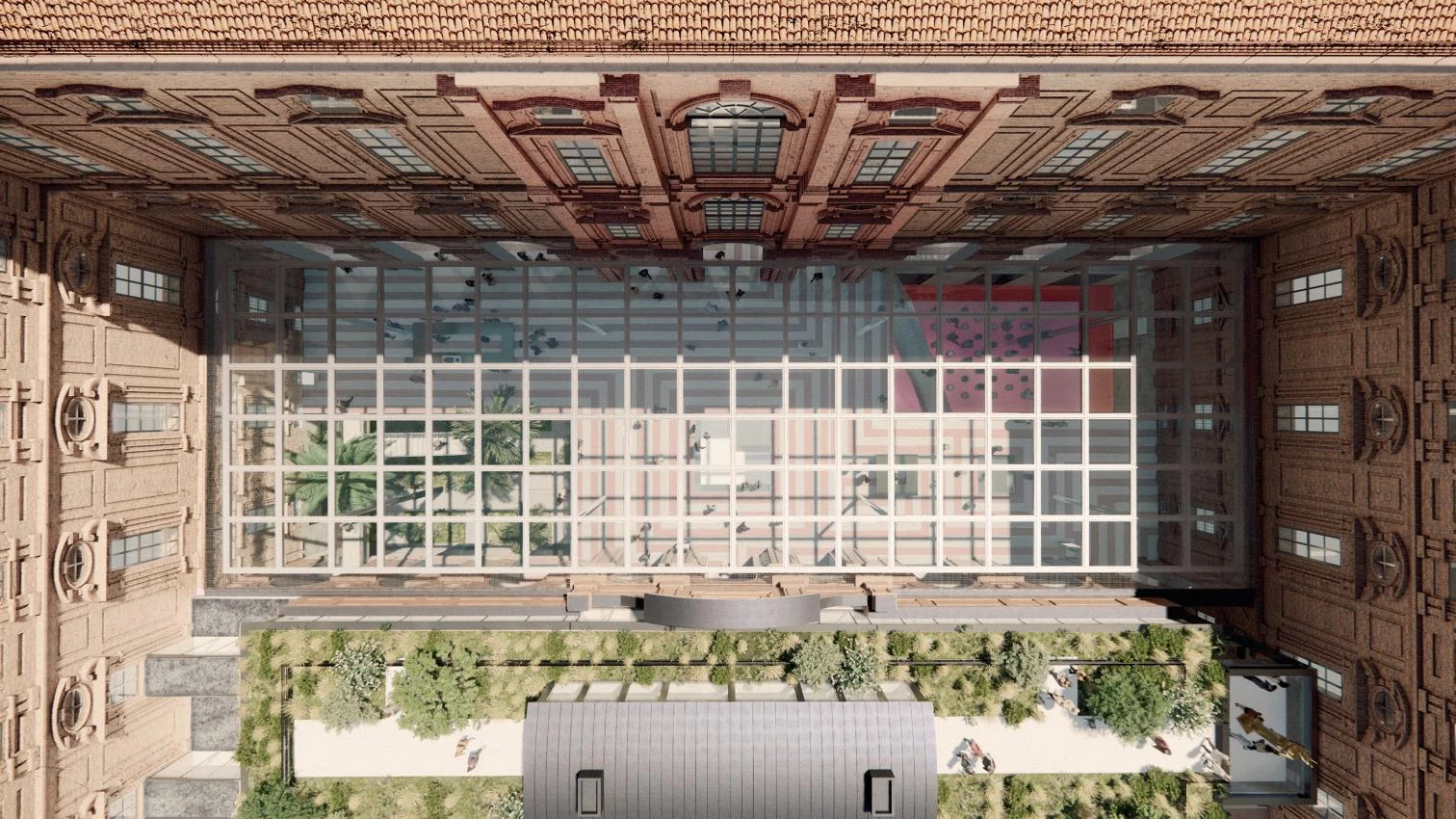
Images © OMA by Alessandro Ross
